The History of Neath Grammar School for Girls
THE HISTORY OF NEATH GRAMMAR SCHOOL FOR GIRLS
Written by local resident Carole Wilsher
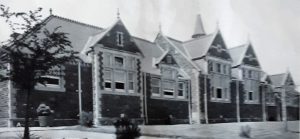
This snippet in a 1950’s copy of the Neath Girls’ Grammar School magazine caught my eye:-
“Two of the sweetest sounds in the world
- the song of the Nightingale
- the ringing of the school bell at 4 0’clock”
Schooldays – the happiest days of your life, or were they?
As I recall, education was, in those days, a very serious business, a lot of work and little play; such progressive maxims as “learning through play” and “learning can be fun” were as yet unheard of. Coedffranc Junior School seemed to me to be overshadowed by the spectre of the ‘11-plus’ and all other activities were eclipsed by the importance of passing that examination.
Well, I did pass it. In September 1958 I entered the hallowed portals of Neath Girls’ Grammar School and its world of serious academic study with the proclaimed goal of a place in University. And that, in a nutshell, was its aim.
Let’s go back in time to the early 20th Century. When my grandfather gained one of the very few fee-exemption scholarships (just 12 offered out of 104 candidates in 1897, then rising to 35 in 1908) in first decade of 1900, Neath County School was almost brand new. Built in late 1896 it owed its life to the Intermediate Education Act of 1889.
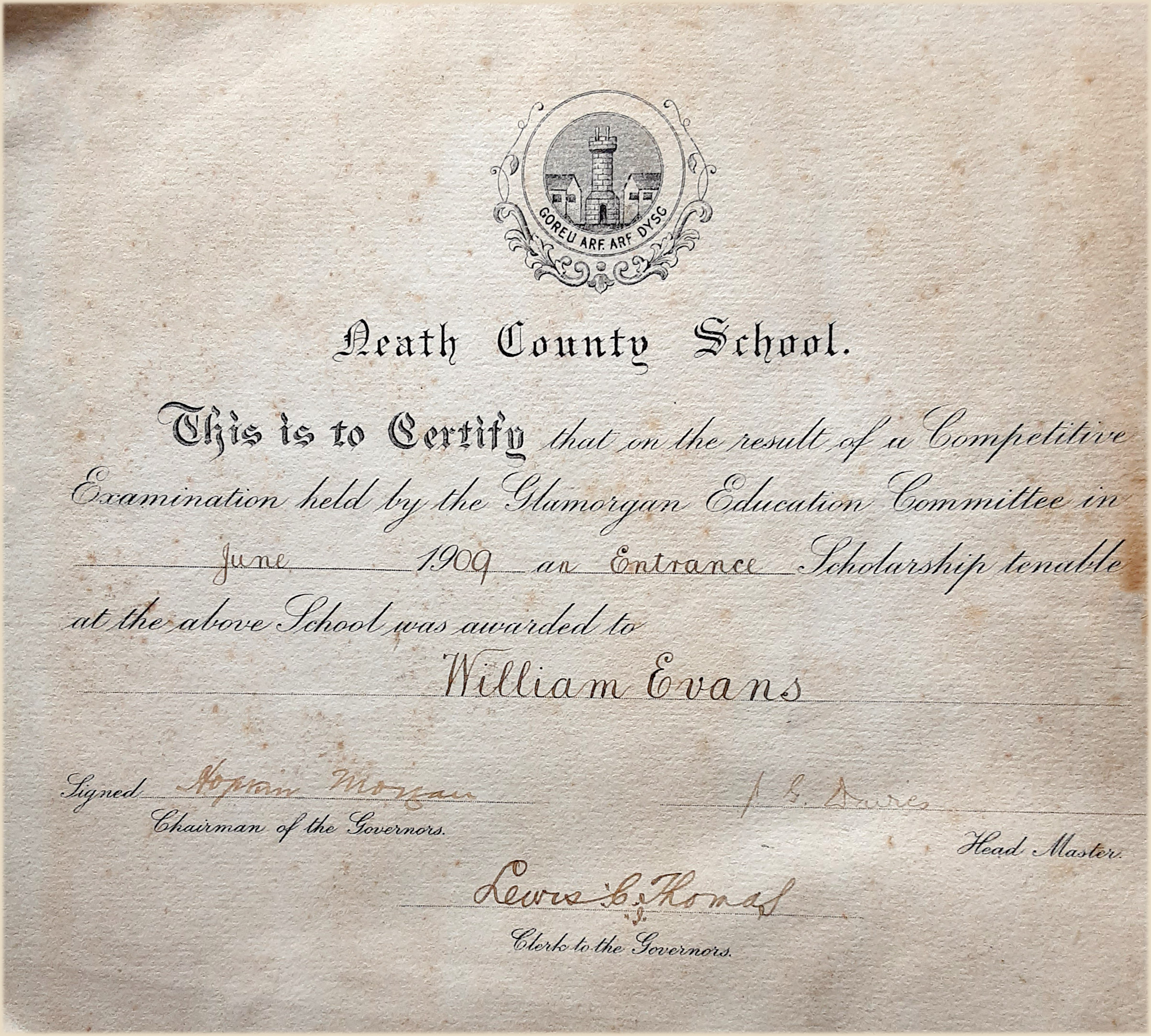
Years earlier, in 1872 Aberystwyth University had opened its doors after a nationwide appeal for funds. It was then followed by Cardiff University in 1883 and Bangor in 1884 with Aberystwyth given equal status in 1885. There was now a desperate need for a form of Intermediate education to bridge the obvious gap between Elementary Schools and the Universities. Yes, a few Grammar Schools did exist in Wales but their fees were far too high for the pockets of the average Welsh working class parents. Despite a report in 1880 by the ‘Aberdare Committee’, proposing reform to and update of the curriculum in these Grammar Schools furthermore recommending new ones be built, progress was extremely slow; it was to be another 9 years before that all-important Intermediate Education Act was passed by Parliament. By this time local committees had already been formed and the Act proposed that money for funding these schools could be obtained in several ways:- voluntary contributions, local rate, Government grant and other South Wales charitable funds. Also established was a Central Welsh Board to inspect and examine these schools.
Financial support was forthcoming and £86,708 (equivalent today, approx. £11.5 million) was raised which enabled Glamorgan County Council to proceed with the building of these new schools. Neath was in fact, one of the first 11 schools built – its official title was ‘Neath Intermediate and Technical School’ and it became known as Neath County School, (this was always the name used by my grandfather and mother and uncle – all former pupils). The local architect of Neath school was the Borough Engineer at the time Mr D M Jenkins and the builder Mr Henry David of Skewen. Total cost of the 11 schools was £32,000 (equivalent today, approx. £4.2 million) and Neath was to be a mixed school with a ‘boys and girls’ department; it was built for 120 pupils – 70 boys and 50 girls and actually opened with 74 children on the register. The salary of the first Headmaster Mr J G Davies MA was £150 per annum (equivalent today, approx. £19,800) and the first Senior Mistress was Miss Jessie Henry (who later became the Headmaster’s wife). Tuition fees were £1.6s.8d (£1.33 – equivalent today, approx. £44) per term excluding books and with an extra 2/6d (13 pence – equivalent today, approx. £17) charged for stationery.
Expansion of premises was needed almost immediately as the original field where Games were played was required for new school buildings; in 1898 Lord Dynevor was approached for first refusal of the field between the school and Dwr-y-Felin Road.
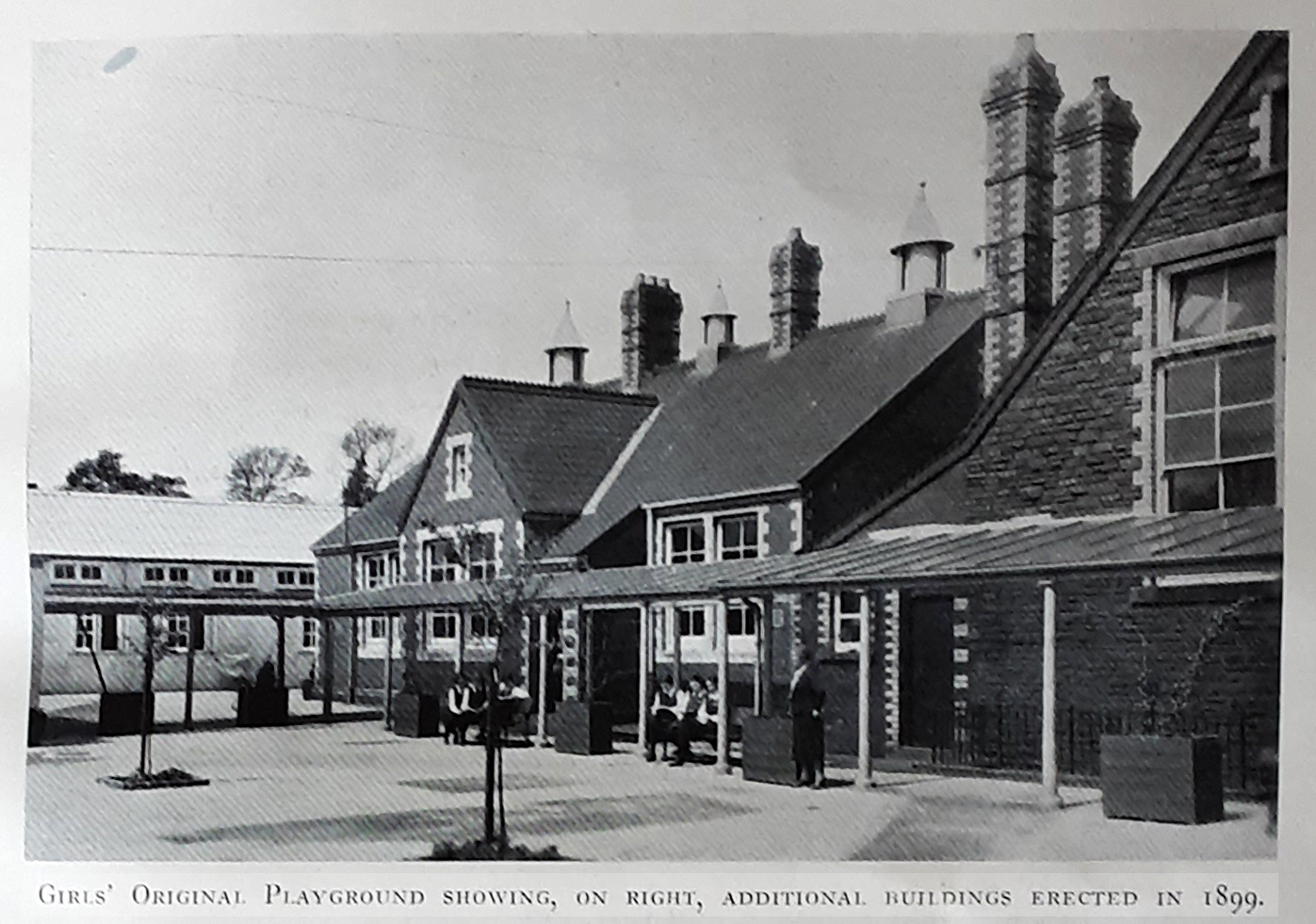
A dispute soon arose between the Governors over the school motto; some favouring a Latin one and others a Welsh one – the Welsh one won the day – “Gorau Arf Arf Dysg”.
Interestingly, too, the new Chairman John Newall Moore JP, a Skewen entrepreneur, was pressing for a reformed timetable to include technical instruction and fewer academic subjects.
However, success in academic subjects was evident right at the start – in the first recorded results of the Central Welsh Board examination in 1900 the 5 entrants achieved the Senior Certificate and by 1904 the number of successful candidates had risen to 16 while pupil numbers had increased to 204. Building expansion too was taking place with a large new gymnasium opened in 1902 and the old gym converted into a physics laboratory.
In 1913 tuition fees were £3.10s.6d (£3.53 – equivalent today, approx. £424) to cover all subjects except music with the cost of books and mathematical instruments paid for by pupils and the number of exemption scholarships was still low with one scholarship paid for by the Neath Abbey and Skewen Cooperative Society for the children of its members. Examination successes continued to rise reaching 54 in that year.
War was now looming large and less than a month after its outbreak 27 old boys had volunteered for service.
By the end of the War the accommodation problem was acute – worsened, actually, by the school being obliged to agree to allow part of the new school site (plans for which had been drawn up just pre-War) to be cultivated during the War time emergency. 346 pupils now attended the school, nearly treble the number of 1896 and that number rose to 416 in 1919.
In 1922 the County Council were asked to consider the suitability of Gnoll House to house the Girls’ Grammar School but finally in 1928 the new Boys’ School opened at the bottom of Dwr-y-Felin Road and Miss A. Decima Jones was appointed Headmistress of the Girls’ School in the original County School building.
School populations in 1928 stood at:-
the County School for Girls 232 pupils and a teaching staff of 12 plus 2 visiting teachers,
and the County School for Boys 304 pupils with a staff of 13 and 1 visiting master.
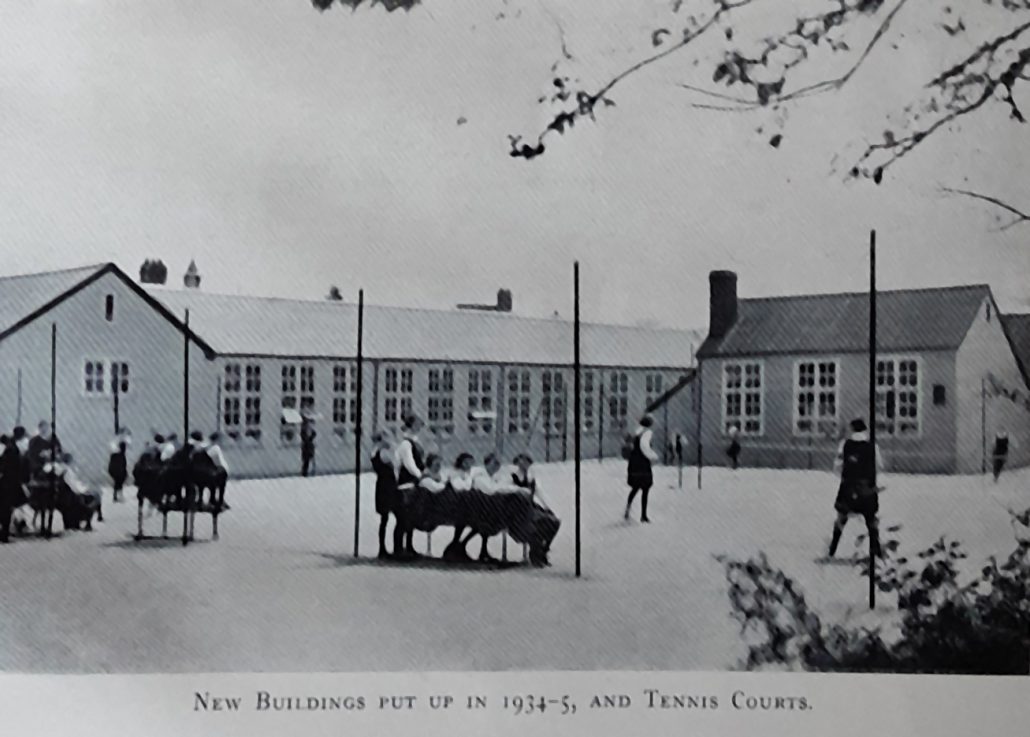
In 1934 a step forward was taken by the Special Place System which abolished the difference between a fee-payer and entrance scholarship so very few parents were obliged to pay full fees.
The Education Act 1944 abolished fees altogether, introducing the Tripartite Education System of Education.
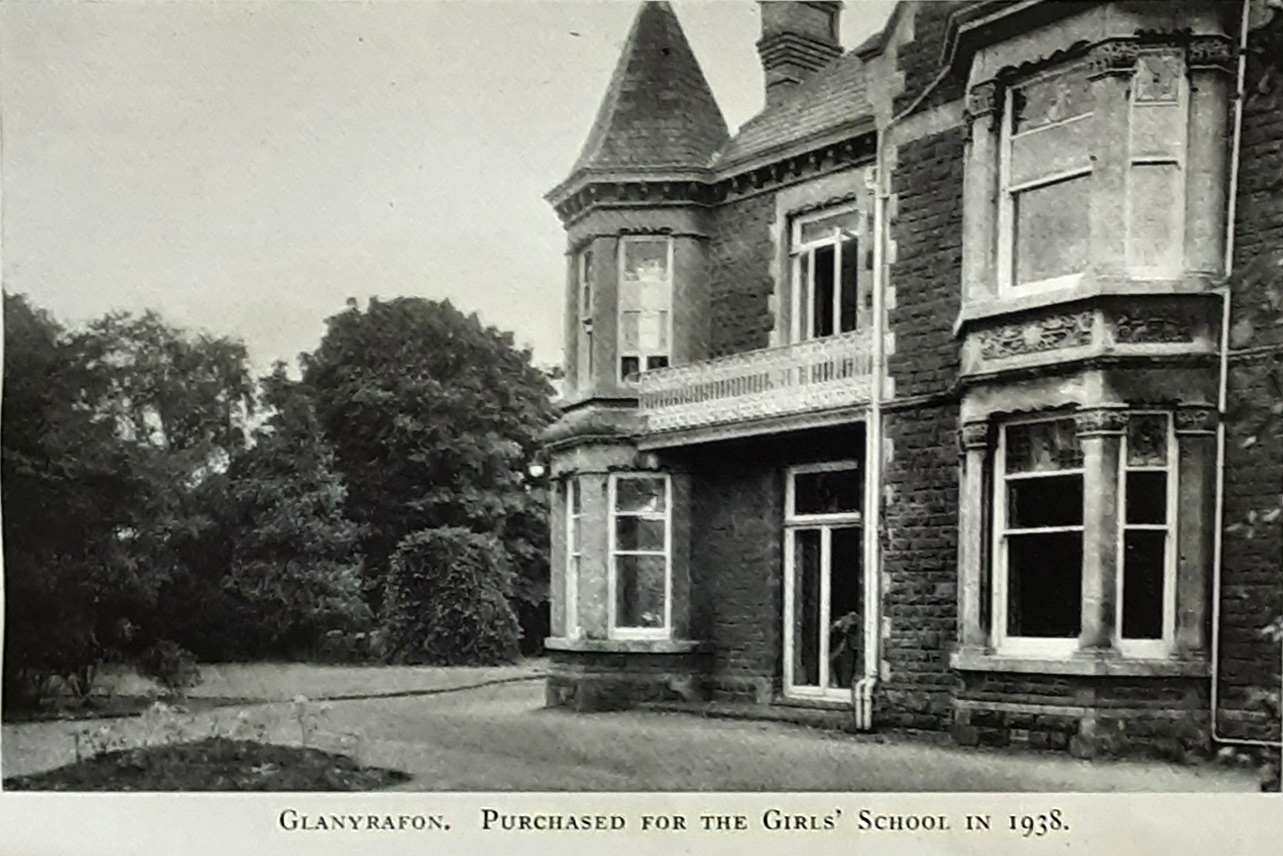
In 1938 the house and grounds of Glan-yr-Afon House were added to the Girls’ School with the house being converted into classrooms and grounds used for “experimental work in Botany.” It is interesting to note, however, that the acquisition of the garden had led to the subject of Horticultural Science being introduced in the curriculum and, through the efforts of Miss Enid Morgan, the Senior Biology Mistress (later to become Headmistress of the School), a Scheme of Work was approved for examination by the Central Welsh Board.
.
And what of the Curriculum at this time?
A quotation from Jubilee Edition of County School Magazine states “There is little fundamental difference between the ultimate aim of the curriculum of a boys’ grammar school and girls’ grammar school.” What an advanced and enlightened statement that is.
Very few pupils at that time left school without completing the course for the School Certificate and the number of passes for the Girls’ School in 1940-41 was 44 with 9 supplementary certificates while the Higher Certificate figure was 6.
.
During the first two years girls followed a general course of study in the following subjects:-
English, History, Geography, Latin, Welsh, French, Mathematics, General Science, Music, Art and Needlework but specialisation was required in Year 3 with a career in mind; languages or sciences were chosen with Greek and German introduced as additional or alternative choices.
Increased time was also given on the timetable for subjects like Music, Art, Cookery and Horticulture. The girls also had P.E. lessons weekly – a minimum of 1 lesson a week each of gymnastics, dancing and games.
Indeed, with the exception of Greek, there was little discernible change in that curriculum by the time I left the Girls’ Grammar School in 1965.
I mentioned earlier “the proclaimed goal” of the Intermediate School system, and the 1946 Jubilee edition of the School Magazine confidently asserted that “the school this year is represented by students at many universities – Oxford, Cambridge, London, Aberdeen, Manchester, Leeds, Sheffield, Reading, at the University Colleges of Aberystwyth, Cardiff and Swansea, at Studley Horticultural College, at the Royal Academy of Music and the Royal Academy of Dramatic Art.” It goes on to point out that although generally girls’ careers were teaching, clerical or nursing, the school had one engineer who had passed her Mechanical Sciences Tripos examination in 1942 and further that no woman’s name had appeared on the Cambridge Engineering lists for 16 years.
By 1962 the career trend for girls still seemed to follow the main pattern – it is interesting to note that of the 29 A level passes gained in that year were in Arts – just 4 girls having chosen Science and Mathematics; also a statistic in that same year recorded that 84 of the 85 girls entered for O level examinations gained a certificate. In addition, Neath Girls’ Grammar School was continuing to send its students to various colleges across the country – 22 of the girls leaving in 1962 went to Universities or Training Colleges while others pursued their training with an employer in a variety of careers from laboratory work to physiotherapy and nursing.
The Girls’ Grammar School reached the end of its life in the 1970’s when the Comprehensive System of Education was introduced in the Neath area.
My own view looking back (without rose coloured spectacles!) is that although I did not enjoy my years there, finding it rigid and humourless, it was without doubt a first class education. Furthermore, I feel I can give that education a good deal of credit for equipping me with the wherewithal to meet the challenge of writing, publishing and selling my first book at nearly 70 years of age.
Make no mistake about it, education for girls was history in the making. Given that Oxford University did not award degrees to women until 1920 (see footnote) Neath County School with its initial allocation of 50 places for girls in 1896, was highly progressive for its time and I really honestly believe that it was an education to be proud of even if I couldn’t wait for the 4 o’clock bell to ring!
~ ~ ~
Footnote:
On 7th October 1920 women became eligible for admission as full members of Oxford University and were given the right to take degrees, a number of which were awarded to students retrospectively. In 1927 the University dons introduced a quota limiting the number of female students to a quarter of male ones. That rule was not abolished until 1957 and in 1959 women’s colleges were given full collegiate status.
Information for this article was obtained from various sources including:-
1946 Jubilee Edition of Neath CountySchool Magazine
1962-3 Neath Grammar School for Girls Magazine
‘Skewen Village Story’ by Carole Wilsher
Dorothy L Sayers, ‘A Biography by Colin Duriez’
~ ~ ~ ~
